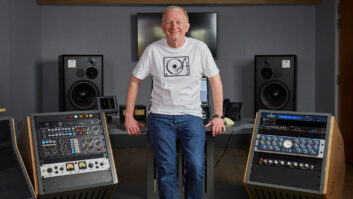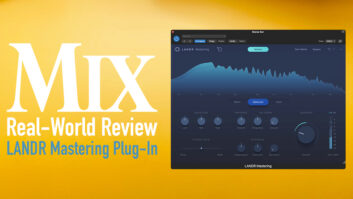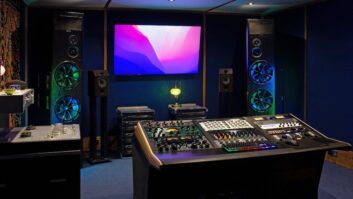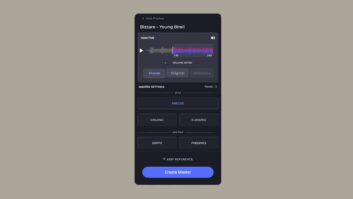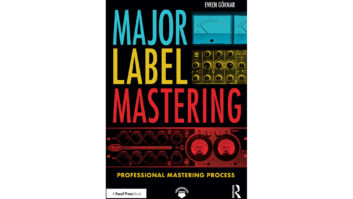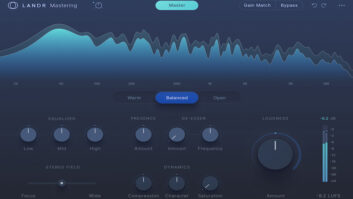THE TRIANGLE, NC—Kevin McNoldy now resides in the Raleigh-Durham metropolitan area of North Carolina, but has experienced the American recording scene unlike most “secondary market” audio engineers today. His childhood beginnings as a songwriter—McNoldy wrote nearly 1,000 songs before high school graduation—led him to enroll and ultimately graduate from Berklee College of Music, concentrating in recording production and engineering.
With numerous RealTraps on the walls and ceiling, Cphonic boasts “an absolutely flat monitor response due to the massive depth of our built-in bass trapping.” “That catapulted me into Nashville, where I built a studio and was soon doing jingles, some Country music off Music Row, and so on,” he recalls. “Later, I built a studio in Charlottesville, Virginia, where I had my first hit, the debut Seven Mary Three album featuring the single “Cumbersome.” That was also the time when Dave Matthews Band was coming up, so there was a lot of energy around the area.”

From there, he made a loop to LA, built a studio for his development deal work for labels and eventually returned to Virginia to build Crystalphonic, a world-class tracking and mixing facility unlike any the state had ever seen. “It was a $5 million, 5,000-square-foot studio, and my goal was to draw acts to what is a secondary market. It was beautiful: one of the last from that era, purpose-built for rock music. But I eventually left it to get back to production; running the studio took me away from the rooms. It was the classic story of building a dream studio, then being so busy that it was impossible to actually work in the studio. It was killing me.”
The Crystalphonic experience led to McNoldy’s career epiphany: He needed to build a more efficient studio, one that allowed him to work with artists anywhere, depending on no locale except for an overall lifestyle-based appeal. “There’s a lot to be said about lifestyle in a secondary market,” he explains. “So now, in North Carolina, I’m once again in a secondary market, drawing clients, but my room is completely modular and my clients are from anywhere around the world. And I can take all of my studio’s components and set up anywhere. It’s the ultimate hybrid environment where you get the best of in-the-box and outboard options, when desired.”
Cphonic Online Mastering balances two main categories of clientele, both of which rarely visit its 430-square-foot control room. “I’m living in two worlds, essentially,” McNoldy explains. “One where people are sending me great mixes in-the-box, and another where artists are recording really great songs, but they recognize their need for help with the mixing.”
Leaving stacks and racks behind, Cphonic’s McNoldy now works from a streamlined, minimalistic custom mastering desk. Designed with a minimalist approach to gear, McNoldy sits at a floated, custom mastering desk amongst a dizzying number of Real-Traps acoustic fixtures throughout, comprising a uniquely attractive and soothing work environment which he says has “an absolutely flat monitor response due to the massive depth of our built-in bass trapping.” Other key gear choices, named in order of importance by McNoldy, include his rare ATR Services one-inch Ampex ATR-102 analog tape machine featuring Crane Song’s Dave Hill-designed Aria Reference Series electronics; German audiophile reference monitors manufactured by KS Digital; and a complete conversion system from Antelope Audio featuring the Eclipse 384 mastering converter, 10M Atomic Clock, Antelope OCX-V master clock and Trinity master clock.

“I’m based here, but all the Real-Traps can be pulled off the wall and moved elsewhere,” McNoldy explains. “If I want to mix or master on site, I can. [This configuration] gives me the ability to be that flexible, and with artists recording anywhere—such as EDM artists recording on laptops with headphones in hotels—we have to be that flexible, too.”
McNoldy calls his ATR-102 “a big part of my signature. It’s one of the few like it in the world. And I am so familiar with it; I tweak it every day. A lot of the sounds I get come from the EQ I apply based on how I align the tape deck.” He often revels in the responses of clients once they hear their productions coming from tape. “It’s just amazing. They may have mixed in-the-box, in their bedroom or wherever, and they have no idea how it translates elsewhere. They’ve never heard tape other than those things originally recorded on tape. With everything that has happened [in recording technology], emulations still can’t touch it.”
Other than a few key vintage analog outboard processors, McNoldy has largely sold off his “two moving trucks-full” of analog boxes that made the original trip to North Carolina, focusing on the efficiency of DAW-based recalls while selectively adding in vintage color. “I’ve paired things down things to be as simple as possible, knowing that anything I use needs to be recallable,” he explains, saying that this approach allows him to balance a number of projects simultaneously. “If I want more vintage choices of tone, then those pieces are wheeled into the room, embedded into the track in Pro Tools, and wheeled out. I may be taking this concept a bit further than some others, but from my perspective, that’s what it takes to keep up with artists these days.”
Cphonic Online Mastering
cphonicmastering.com

